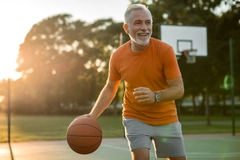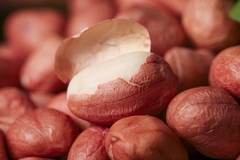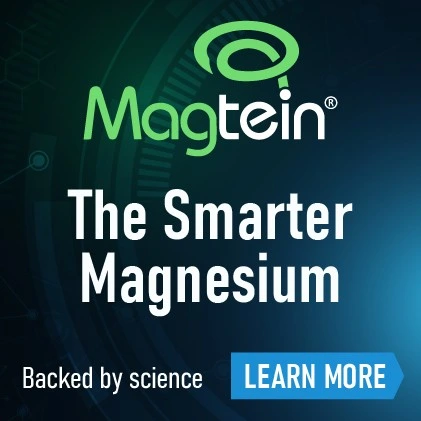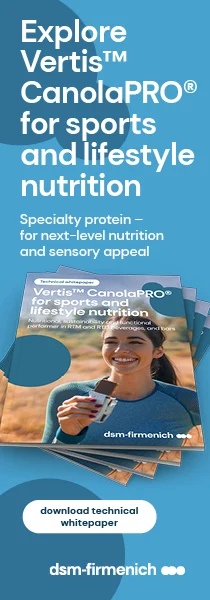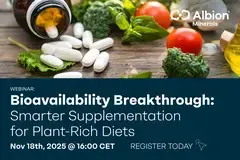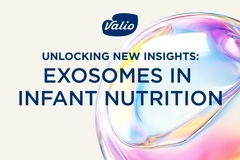50 years of Bioiberica: Expanding from pharma to sustainable nutraceuticals
As life science company Bioibercia is celebrating its 50th anniversary, we toured its leading manufacturing site in Palafolls, Spain. Here, the company created its first ingredient in 1975 and still produces most of its product portfolio. Over the decades, Bioiberica expanded from a pure pharmaceutical ingredient business into nutraceutical, animal feed, and plant health solutions.
Nutrition Insight explores how sustainability and science drive the company’s new product development with Luis Solera, Bioiberica’s CEO, and Antonio Vendrell, marketing and communications director.
When it was founded, Bioiberica focused on producing the anticoagulant heparin, one of the most commonly used medications in thrombosis prevention and treatment. The compound is made from pigs’ intestinal mucosa, a pork industry byproduct.
Solera says the company’s sustainability values originated with its founder, Dr. Francesc Xavier Vila. “He recognized that we only used 0.01% of the raw material when producing heparin. So, he asked, “What will we do with the rest?” We had two options: treat it as waste or try to valorize it over time to bring new products to the market.”
“That vision has led us to where we are now, where we’ve valorized more than 90% of the raw material entering our factory.”

Vendrell adds that Bioiberica’s origin in heparin shaped its approach and business development when it expanded its pharma portfolio and developed a non-pharma range, including dietary supplements and nutraceuticals.
“These complement healthy individuals’ nutrition, either as nutraceuticals or functional foods — products that can be found at the supermarket, enriched with functional benefits.”
Circular manufacturing
Solera highlights that Bioiberica’s circular economy model is the foundation of its manufacturing process.
“We start with raw material sourced from animals slaughtered in a slaughterhouse, which enters our manufacturing sites. Only a small percentage of the material becomes the active pharmaceutical ingredient for human consumption. The rest is used in different applications, always backed by science.”
 (19).jpg) In Palafolls, Spain, Luis Solera shared Bioiberica’s key sustainability milestones of the last 50 years.He details that the company develops products for animal nutrition and biostimulants for agriculture. “These animal nutrition products help feed animals during their early stages, ensuring proper growth while reducing antibiotic usage. Later, these animals again feed on the raw material Bioiberica uses.”
In Palafolls, Spain, Luis Solera shared Bioiberica’s key sustainability milestones of the last 50 years.He details that the company develops products for animal nutrition and biostimulants for agriculture. “These animal nutrition products help feed animals during their early stages, ensuring proper growth while reducing antibiotic usage. Later, these animals again feed on the raw material Bioiberica uses.”
“Similarly, in agriculture, our biostimulants help plants grow while reducing the need for chemical fertilizers,” continues Solera. “Ultimately, the materials we process feed animals and humans, completing the cycle.”
“We’re currently reusing about 90% of the raw material, and our goal is to reach 100%. As we push further, it becomes more challenging, but we are committed to it.”
In addition, Solera notes that sustainability provides parameters similar to those it uses to measure productivity. “For example, we reuse about 30% of the water in our processes and aim to increase that. We already use solar panels in our factories for clean energy.”
“All of these efforts contribute to our long-term sustainability and ensure the continued productivity of our operations.”
Science-backed solutions
Vendrell underscores the importance of science and quality in developing products, followed by regulatory compliance and clear, objective communication with tangible results.
“Science is fundamental to everything we do. It defines the company and is behind our functional ingredients.“Quality is equally important, ensuring the highest standards throughout the production process — from start to finish.”
 Vendrell underscores the importance of science and quality in developing products, in addition to regulatory compliance.Bioiberica uses the same “glasses” for its pharma and non-pharma products. “Even though it’s not strictly pharmaceutical, we approach the nutraceutical category with the same standards we apply in pharma.”
Vendrell underscores the importance of science and quality in developing products, in addition to regulatory compliance.Bioiberica uses the same “glasses” for its pharma and non-pharma products. “Even though it’s not strictly pharmaceutical, we approach the nutraceutical category with the same standards we apply in pharma.”
“Currently, we focus on three main categories,” Vendrell details. “The first is mobility, where we offer two ingredients: Collavant n2 and Mobilee. Mobilee supports both joint and muscle health. Then, we have a skin and beauty category under the brand name Dermial and a digestive health category under Daogest.”
He adds that these ingredients all have a low daily dosage. “Collavant requires just 40 milligrams a day, Mobilee needs 80 milligrams, Dermial requires 60 milligrams, and Daogest requires 4.2 milligrams.”
Future focus
Over the past ten years, Bioiberica has “evolved tremendously,” says Solera. “We already know where we want to be in ten years: continuing along the path we’ve been on for some time now.”
The company is developing new products and categories where continuous implementation of its circular economy model is key. “We may not move as quickly as we’d like, but we’re committed to ensuring that our path aligns with that model.”
“In ten years, we aim to be a much larger Bioiberica — still focused on the same principles, but expanding into more categories and continuing to grow,” Solera underscores.
 (20).jpg) Antonio Vendrell highlighted the company’s expansion from pharma into nutraceutical solutions for digestion, mobility, and skin health.Vendrell specifies that the company sees strong opportunities for development in mobility, particularly on muscle strength, which is gaining attention as part of the healthy aging and women’s health trends.
Antonio Vendrell highlighted the company’s expansion from pharma into nutraceutical solutions for digestion, mobility, and skin health.Vendrell specifies that the company sees strong opportunities for development in mobility, particularly on muscle strength, which is gaining attention as part of the healthy aging and women’s health trends.
“On the dermatology side, we see the potential for new science and properties in Dermial. We’re already working on a pipeline and basic research in dermatology, which will likely lead to new ingredients in the future.”
Science through collaboration
Meanwhile, Solera and Vendrell also highlight the importance of collaboration in the company’s history and future developments.
“While we play an important role in the value chain, we must also work closely with others to ensure that the final product on the market meets the necessary standards and that its ingredients are traceable throughout the value chain,” details Solera.
“By working with stakeholders on regulatory, sustainability, and other aspects of the value chain, we can create a more secure and healthier process from start to finish,” he adds. “That’s our goal — to ensure responsibility and transparency throughout the chain.”
In addition, Vendrell says that many of Bioiberica’s accomplishments would not be possible without understanding and collaborating with external partners, such as research centers, customers, and other stakeholders.
“Looking to the future, our strategy will revolve around transparency and maintaining loyalty to our principles,” he adds. “For example, we recently became the first collagen product certified under NutraStrong, which sets objective standards for quality and scientific substantiation.”
He concludes: “This is crucial for the future — collaborating with different stakeholders and companies on developing and certifying to ensure products we sell comply with high standards.”

